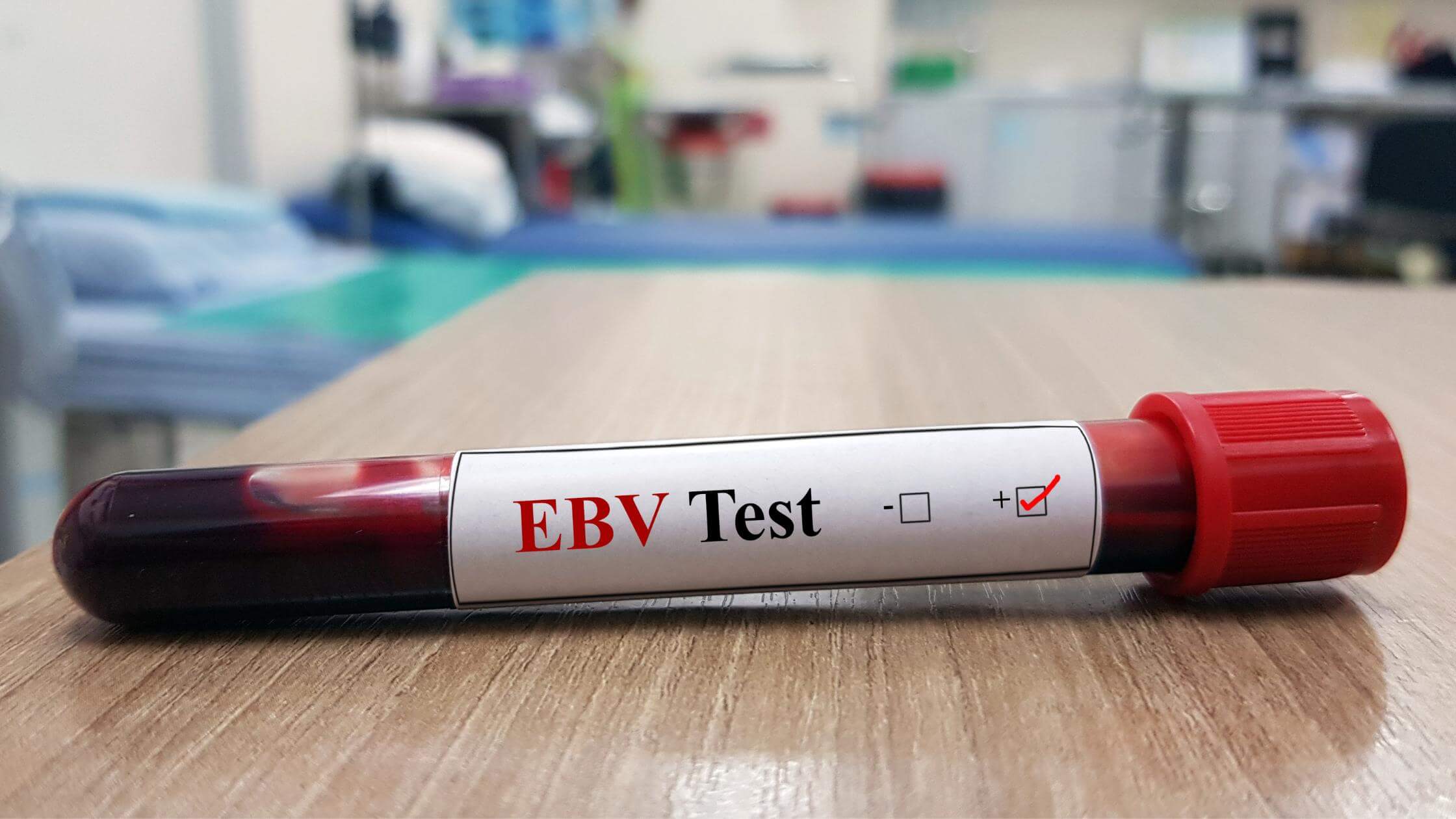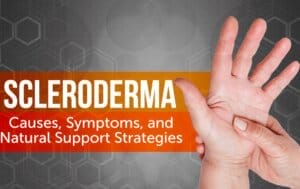Epstein-Barr Virus – What is it and how does it impact long COVID?

Epstein-Barr Virus – What is it and how does it impact long COVID?
The Epstein-Barr virus (EBV), a virus in the herpesvirus family, is a highly contagious and common infection in which over 90% of the population worldwide has been infected [1] — you may have already contracted the virus without even knowing it.
Although EBV and COVID-19 are caused by different viruses, recent research suggests that inflammation caused by COVID-19 may cause the reactivation of EBV in some people.
So, how does this happen and what can you do about it? Let’s find out more about EBV itself and how COVID-19 has the ability to trigger this very common virus.
What is the Epstein-Barr virus?
The Epstein-Barr virus was named after Michael Anthony Epstein and Yvonne Barr, who discovered the virus in 1964 along with Bert Achong.
EBV is a type of herpesvirus called herpesvirus 4. It is a double-stranded DNA virus that infects B lymphocyte cells. It’s the same group of viruses that can cause cold sores, genital herpes, chickenpox and shingles.
Two major types of EBV have been detected in humans: EBV-1 and EBV-2. These are also known as types A and B, respectively. EBV-1 and EBV-2 differ in the sequence of the genes that code for the EBV nuclear antigens. EBV-2 immortalizes B cells less efficiently than EBV-1 in vitro, and the viability of EBV-2-infected lymphoblastoid cell lines is less than that of EBV-1-infected lines. [2]
Most cases of EBV don’t cause symptoms but it can cause a variety of diseases. In some cases, especially in adolescents and young adults, it can lead to infectious mononucleosis (glandular fever) and in rare cases, it can lead to cancer.
Once you get EBV, the infection stays within your body for your entire life in a dormant state in which it’s inactive or sleeping. The virus can be reactivated, and you will experience symptoms again, regardless of how long ago you first acquired the virus.
Five types of EBV infection
An infection involves invasion of the body, replication, and the body’s reaction to the bug that has invaded the body. There are five different ways in which EBV can present itself:
- dormant EBV (there are no symptoms, but laboratory results are positive).
- acute illness (this may last for two to four weeks). This is also known as mononucleosis, known as mono or glandular fever.
- chronic active illness (acute illness symptoms lasting more than three to six months).
- reactivated simple illness (appears months or years after initial illness/exposure; can present as an autoimmune condition such as multiple sclerosis, rheumatoid arthritis, and Hashimoto’s; can resolve within a few months with or without treatment)
- reactivated complex illness (a worse version of reactivated simple illness, and often involves co-infections with bacteria like H. pylori or tick-associated illnesses, significant mitochondrial damage, biofilm formation, and more; this can also occur with incomplete treatment) [3]
How does Epstein-Barr virus spread?
It spreads through bodily fluids, especially saliva, so kissing and sharing food and utensils are common ways in which the virus can spread. EBV has the highest incidence rate in younger patients aged 15-24. Teenagers are at risk of coming down with this condition and extreme fatigue is usually the first sign they have contracted EBV.
What are the symptoms of Epstein-Barr virus?
EBV infections often lie dormant, so they don’t always cause symptoms. This is especially true for children.
Teens and adults are more likely to experience symptoms, which can include:
- fever
- feeling tired or fatigued
- headache
- sore throat
- swollen lymph nodes in your neck or underarms
- swollen tonsils
- enlarged spleen or swollen liver
- body aches
- skin rash [4]
These symptoms can last for two to four weeks but fatigue can last for longer, sometimes even months.
Though EBV typically remains latent with no further severe issues, it can be reactivated again for a few reasons. These reasons include:
- high stress levels
- insufficient immune system
- chronic infections
- antibiotic treatments
- significant hormonal changes
- inflammatory conditions or toxin/mould exposure [5]
What effect does COVID-19 have on the EB virus?
Since the 2020 pandemic, researchers have discovered a link between the Epstein-Barr virus and long COVID.
Two research studies – one study from 2021 and another study from 2022 – suggest that inflammation caused by COVID-19 may cause EBV reactivation in some people. This suggests that many long COVID symptoms may not be a direct result of the SARS-CoV-2 virus but may be the result of COVID-19 inflammation-induced EBV reactivation instead.
In addition, these studies show acute COVID-19 can cause a near-immediate triggering of reactivated EBV, while other cases show EBV reactivation several months after COVID-19.
The relationship between COVID-19 and EBV reactivation opens up new possibilities for long COVID diagnosis and treatment. The researchers indicated that it may be worth testing patients newly positive for COVID-19 for evidence of EBV reactivation. If patients show signs of EBV reactivation, they can be treated early to reduce the intensity and duration of EBV replication, which may help inhibit the development of long COVID. [6]
EBV, the immune system and autoimmune diseases
EBV down-regulates the immune system. It does this by blocking signals that initiate immune cells like NK-cells, T-cells, and B-cells.
When these cells are down-regulated or impaired, we become susceptible to more opportunistic infections like COVID-19. Along with this, evidence has shown that people with chronic EBV infections are at a greater risk of autoimmune conditions. Researchers think EBV may contribute to the following:
- Multiple sclerosis
- Rheumatoid arthritis
- Inflammatory bowel disease
- Type I diabetes
- Juvenile idiopathic arthritis
- Celiac [7]
Testing for EBV
If you or your doctor suspects you may have EBV, there are several different laboratory tests that detect antigens which will confirm whether there is an active or reactivated Epstein-Barr infection or if there has been an infection in the past.
Commonly used test to detect Epstein Barr virus:
- EBV viral capsid antigen IgM. anti-VCA appears early in EBV infection and usually disappears in 4-6 weeks.
- EBV viral capsid antigen IgG. Appears in the acute phase of EBV infection peaks at two to four weeks after onset, declines slightly then appears for the rest of a person’s life.
- EBV Early antigen-antibody. Anti EA- IgG antibody appears in the acute phase of illness and generally falls undetectable after 3-6 months. In many people, the presence of this antibody is a sign of an acute infection, but in 20% of people, there may be detectable antibodies against the early antigen for years.
- EBV nuclear antigen. This immunofluorescent test shows the antibody to the early nuclear antigen that is not seen in the acute phase of the infection but slowly appears 2-4 months after symptoms and persists for the rest of the person’s life. There are other enzyme assays of this type of test, and if they are not performed with the correct standards, they could show a false positive result.
- EBV DNA/PCR test. This is not a recommended test by the CDC, but it may serve a purpose in detecting the DNA of the EBV virus and permit treatment with antivirals.
- Monospot. This test is not recommended for general use. The antibodies detected by the mono spot can show up positive from other illnesses. The test can show false positive or false negative results. The test may indicate that a person has a typical case of infectious mononucleosis. [8]
Your Functional Medicine health practitioner can help you decide which test will be best for your needs.
How to treat EBV the natural way
If you have EBV symptoms, there are several ways to reduce their severity. Although you will never be able to eradicate the virus from your body, you can help force it into dormancy with a some of the following steps:
- reduce the stress in your life where possible as its has a significant impact on our immune system
- eat a clean, natural and nutritious diet to reduce inflammation and build your immune system.
- heal the gut with probiotics and healing fermented food to balance your microbiome and eradicate any toxins.
- eliminate any infections with thorough testing for diagnosis and appropriate treatment and a clean diet
- reduce your toxic burden by avoiding chemicals
- get good sleep and plenty of it as this is the time when we repair our bodies
Supplements
The following supplements can support your body to protect your immune system to keep EBV at bay:
- Lysine is an essential amino acid that is necessary for growth, tissue repair, and the normal production of hormones, antibodies, and digestive enzymes.
- Lauricidin is used to treat infections including the cold, the flu, herpes, and EBV. It helps to boost your immune system and combat chronic fatigue syndrome.
Humic acid can fuel your body with an abundance of minerals and fight viruses effectively. [11]
There are other herbal supplements such as ashwagandha, liquorice, St. john’s wort, lemon balm, ginseng, and holy basil that are effective for use to support the immune system support.
How we can help
As EBV is so common and usually mild, it doesn’t warrant medical intervention but as it has been linked to autoimmune disease and COVID-19, as well as has the potential to become a chronic condition, it’s worth our attention.
Although additional studies are still needed to better understand the link between EBV and long COVID, the recent research on its link to long COVID has implications for treatment.
If you have any of the symptoms above or are experiencing long COVID, our Functional Medicine experts at Advanced Functional Medicine can support your body and balance your biochemistry and viral load to assist in managing your health.
Contact us to find out more.




